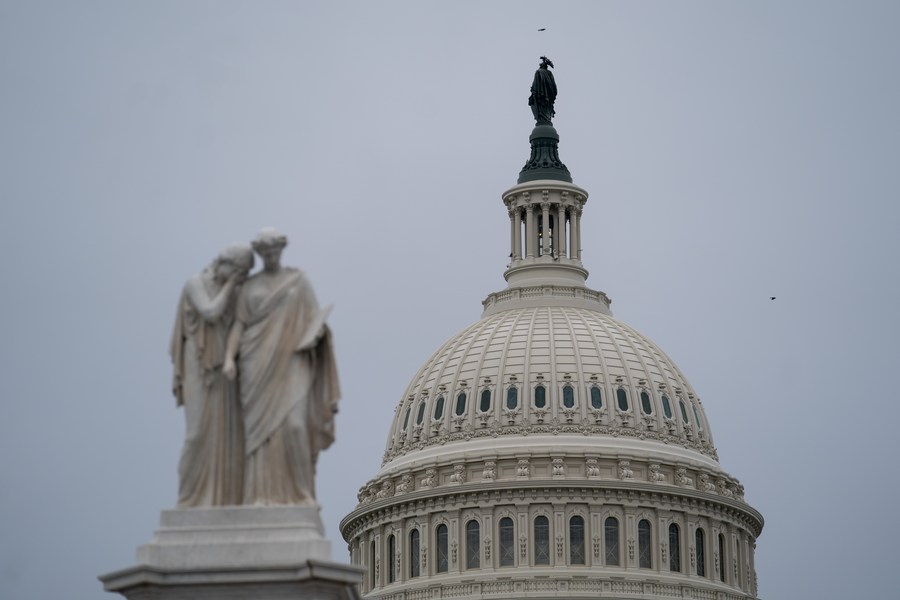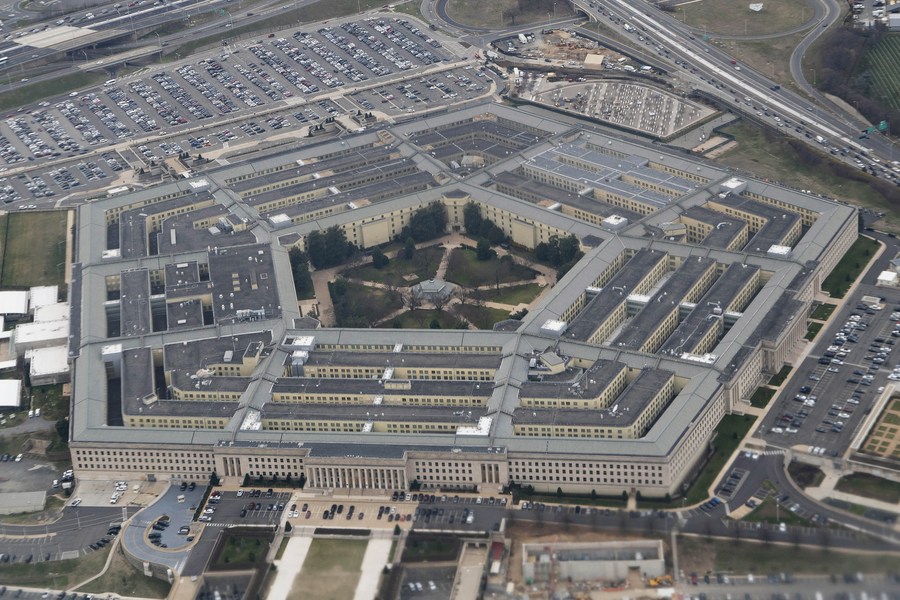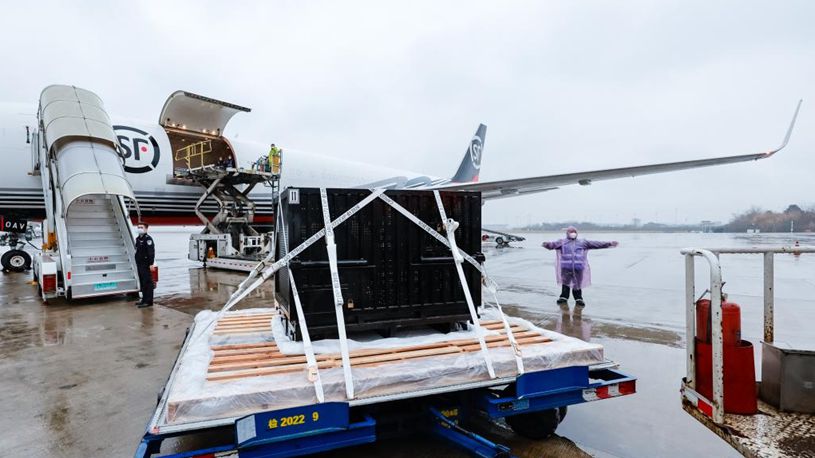
This photo taken on Jan. 4, 2023 shows the U.S. Capitol building in Washington, D.C., the United States. (Xinhua/Liu Jie)
-- Washington's drastic reaction to the weather-monitoring balloon not only goes against scientific common sense, but also violates customary international practice and relevant international conventions.
-- In fact, the United States has been one of the leading countries that fly high-altitude airships for surveillance and other purposes. What should be noted is that its own balloons frequently enter other countries' airspace.
BEIJING, Feb. 24 (Xinhua) -- Washington's recent melodramatic reaction to a stray Chinese civilian unmanned airship has made a big splash inside the United States and startled many around the world.
Despite that Beijing has repeatedly clarified the incident and expressed its regret, the U.S. government and some American media outlets still went on hyping up a "spy balloon" narrative, and the Pentagon shot down the balloon.
Those actions have apparently stirred up new tensions between China and the United States, particularly at a time when the two sides are trying to improve their ties after Chinese President Xi Jinping and his U.S. counterpart, Joe Biden, met in Bali, Indonesia, late last year.
For the record, the use of civilian airships or other aircraft for scientific research is a common practice globally.
Washington's drastic reaction to the weather-monitoring balloon not only goes against scientific common sense, but also violates customary international practice and relevant international conventions.
In fact, the United States has been one of the leading countries that fly high-altitude airships for surveillance and other purposes. What should be noted is that its own balloons frequently enter other countries' airspace.
Groups and individuals like the U.S. SPCG radio club have flown many high-altitude balloons from the United States in the name of local community service and hobbies for amateurs.
And those balloons, which carried APRS radio terminals and various data sensors, have flown over the airspace of Britain, Russia, Norway, Ukraine, China, Japan, France, Italy, South Korea, Mexico, Saudi Arabia, Pakistan, Myanmar, Afghanistan and other countries multiple times. Obviously, such global flights do not tally with the alleged intentions.
According to Politico, the Pentagon has spent billions of dollars developing high-altitude reconnaissance balloons since 1997 and quietly transitioned the balloon projects to military services in 2022. The balloons may be used to track hypersonic strategic cruise missiles being developed by China and Russia.

Photo taken on Feb. 19, 2020 shows the Pentagon seen from an airplane over Washington D.C., the United States. (Xinhua/Liu Jie)
Since last year, U.S. balloons have illegally flown over China's airspace more than 10 times without the approval of relevant Chinese authorities. But China handled those illegal flights of U.S. airships in a calm and professional manner. That has demonstrated Beijing's respect for international law and sincerity in properly managing China-U.S. relations.
So the question is: If the United States claimed the Chinese airship incident as a violation of its sovereignty, then what is the explanation for its own balloons' illegal overflight over China?
Clearly, Washington has resorted again to double standards. It has also betrayed the stated pledge that it "does not seek conflict with China."
For some China-hardliners in the United States, the balloon saga has indeed offered another chance to inflate the "China threat." For a period of time, the U.S. side has blacklisted more Chinese technology companies on ill-founded grounds, and been pushing forward chip embargoes against China. According to their Cold-War mentality, a growing China, particularly in the high-tech sector, poses a dire threat to America's pursuit of global dominance.
As former U.S. trade official William Reinsch was quoted as saying by The Economist in an opinion published last month, Washington has moved from a "run faster" to a "run faster and trip the other guy" policy.
China-U.S. relations are widely believed as the world's most consequential bilateral relationship. Their ties matter to the vital and long-term interests of the two nations as well as to the world's peace and development. But what Washington has done in the balloon incident has prompted the world to wonder whether it is sincere or at least interested in setting up "guardrails" in the relationship.
In this highly interconnected world, Beijing and Washington stand to gain from cooperation and lose from confrontation. Thus it is time for the United States to walk its talk, properly handle its differences with China, and work with the Chinese side to bring their much troubled relations back on course with concrete actions. ■












